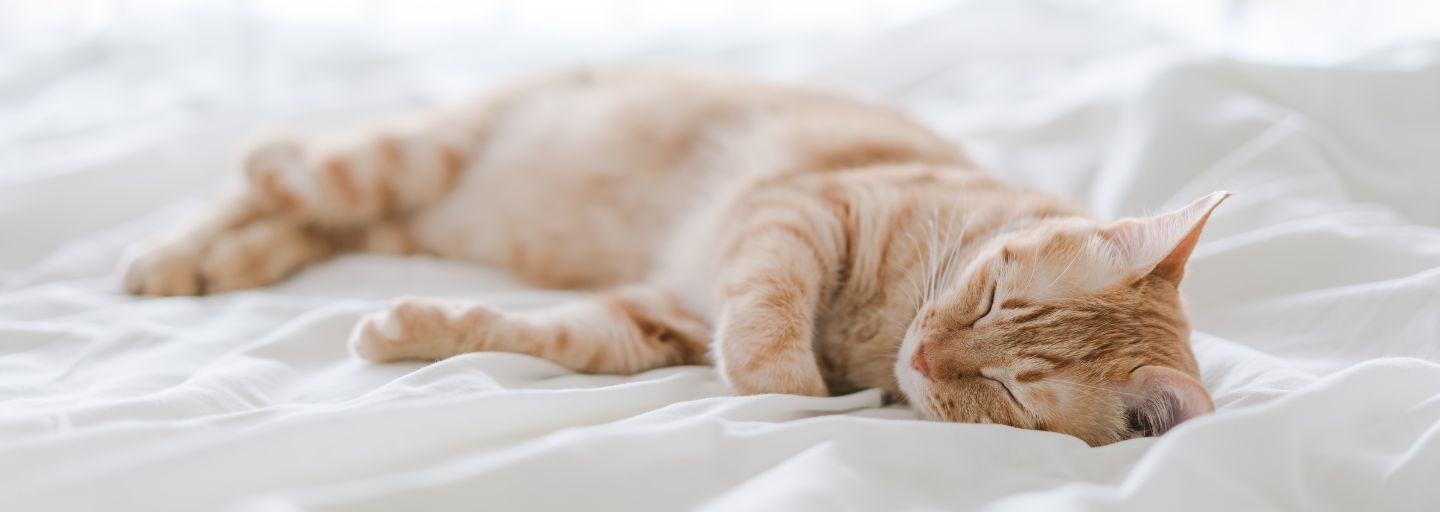When cold and flu season rolls around, you work hard to keep yourself illness free. But, did you know your cat could come down with the sniffles too?
Unfortunately for your four-legged family member, cat flu is fairly common and contagious. Just like its pesky human equivalent, cat flu can cause a runny nose, eyes, breathing problems and coughing.
The good news is it’s a different type of virus to the human flu, so it can’t be passed from you to your beloved cat (and vice versa). Phew! But, what are the risks? And what can you do to protect your cat?
As cat lovers, you only want the best for your cat. Here’s how you can give them the care they deserve.
What You Should Look Out For
Your cat is most at risk around other cats who might have cat flu. It can be passed from cat to cat, through food bowls, bedding, litter trays or even human hands – so, be careful when cuddling unfamiliar cats!
While cats of all ages can catch the flu, young kittens and older cats have a higher risk because their immune systems are weaker than healthy, adult cats. Even if your favourite cat is in their prime, you’ll still want to be wary.
Whether they’re sniffling or behaving a little different than usual, the symptoms of cat flu are pretty easy to spot once you know what to look for. Here are a few warning signs your cat may be feeling under the weather:
- Sneezing
- Runny eyes and nose
- Coughing
- Loss of appetite
- Fatigue
- Change in behaviour
- Fever
- Difficulty breathing
Generally speaking, the more of these symptoms your cat shows, the more likely it is they’ve caught the flu. As soon as you spot any symptoms, it’s a good idea to take a trip to the vet.
How to Be a Protective Cat Parent
Luckily, there are vaccinations available to help decrease your precious cat’s chance of getting sick. Vaccinating your cat can be especially helpful if they regularly socialise with other cats.
If you know a cat with the flu, make sure they’re kept isolated from other cats until they are fully recovered. Food bowls, litter trays and bedding should also be washed separately, to help prevent any extra spreading of the disease.
A Little Care Goes a Long Way
If your little loved one catches the flu, it can take around two weeks for them to feel better. Here are a few things you can do to help them make a speedy recovery:
Extra Love
If your cat is feeling unwell, they’re probably feeling a little sorry for themselves. After all, they’d much rather be playing like usual. The first thing your cat will need is plenty of TLC from their favourite person: you!
Gentle Bathing
A runny nose and eyes can be very uncomfortable for your cat. If they have these cat flu symptoms, you can gently wipe their eyes and nose with warm water. It’ll help remove any leaking and crusting – plus, your cat will love the attention.
Steam Inhalation
If you notice your cat’s nose is blocked and they’re having difficulty breathing, steam can help. Place your cat in the bathroom after you’ve taken a hot shower, so they can breathe in the steam. Alternatively, you can use a humidifier to increase the moisture in the air of your home.
Food
An unhappy cat may become uninterested in meal time. If your cat refuses to eat, try warming up strong smelling foods or mix in their favourite treats to encourage their appetite.
Visit the Vet
Most cats will recover from the flu without a problem. However, if a severe case of cat flu is left untreated, it can be deadly or cause permanent damage to your cat’s eyes. It’s better to be safe than sorry. If your cat’s not on the mend after a few days, make an appointment with your trusted vet.
Staying on top of your cat’s vaccinations and keeping the warning signs in mind is the best way to protect your favourite cat from cat flu. If they do catch the sniffles, don’t fret. With a little extra love and care from you, your cat will be feeling better in no time.



